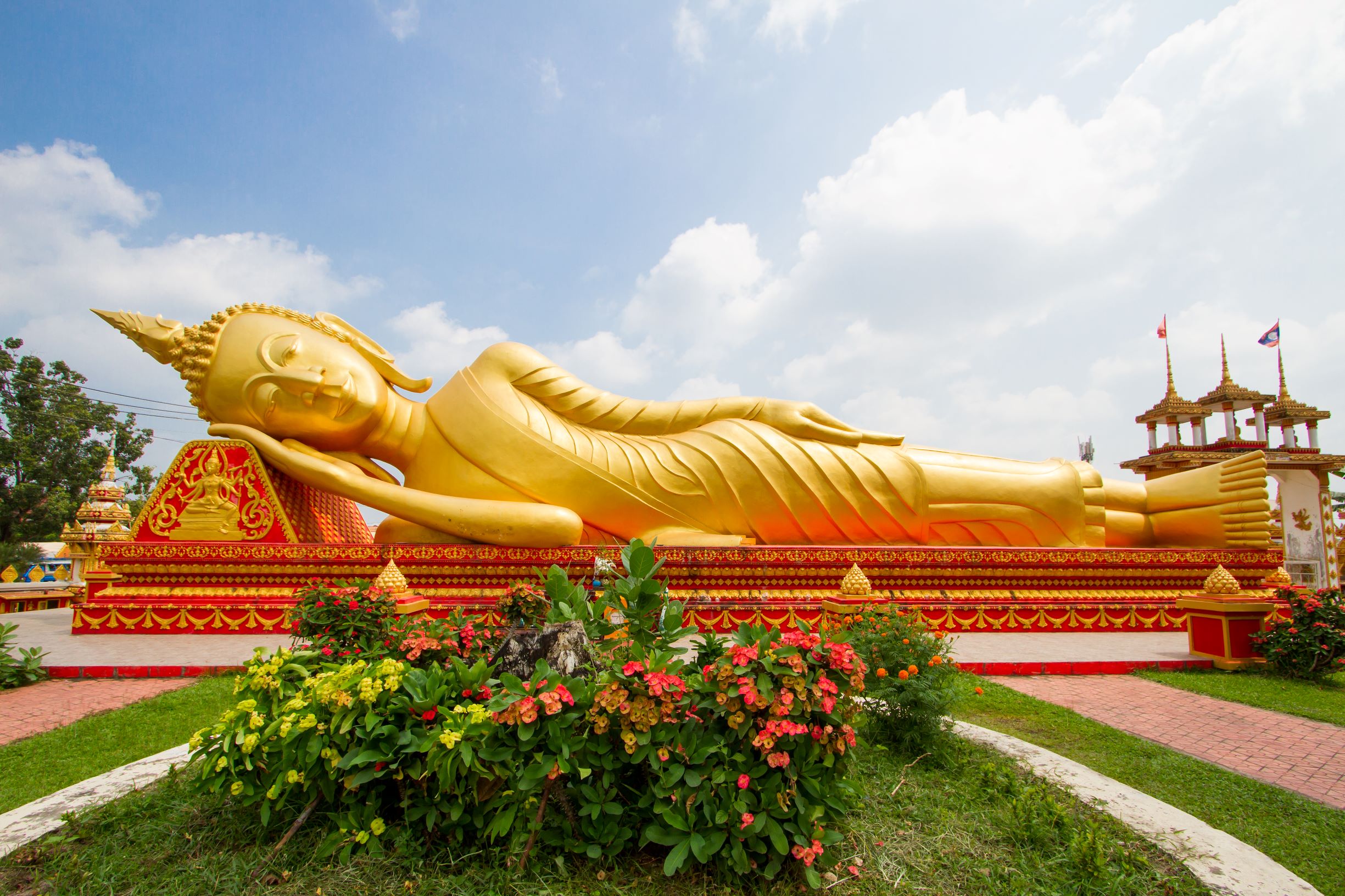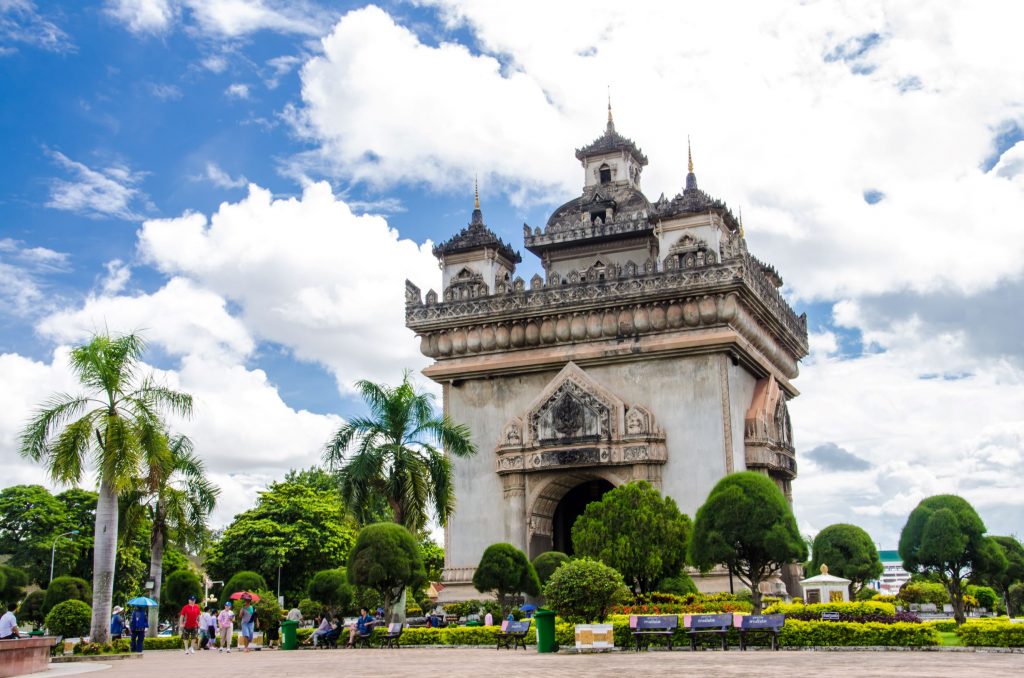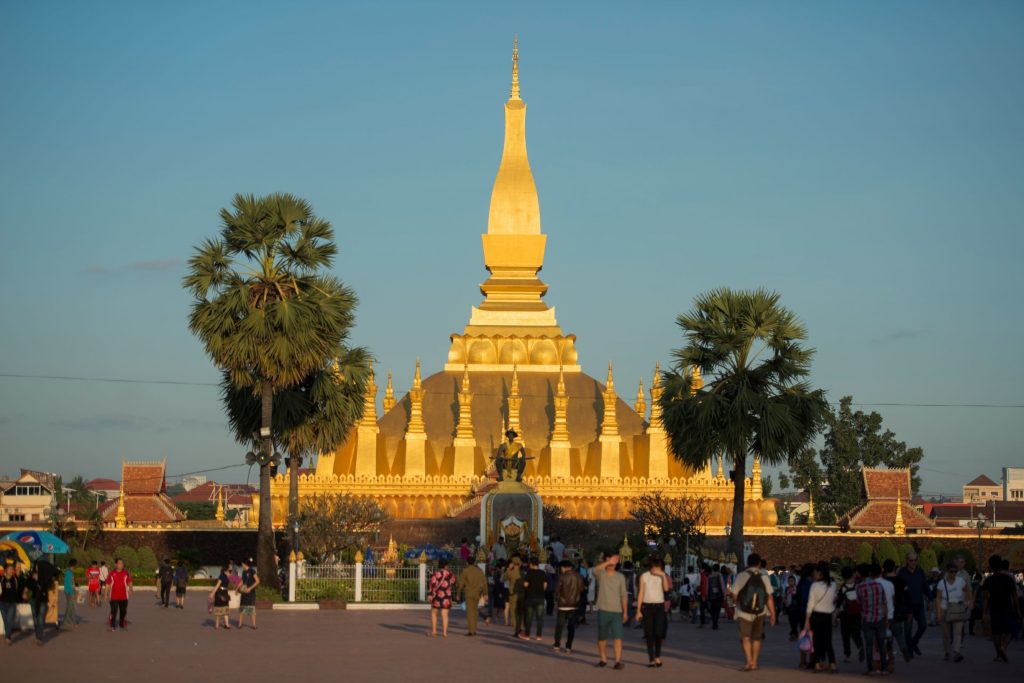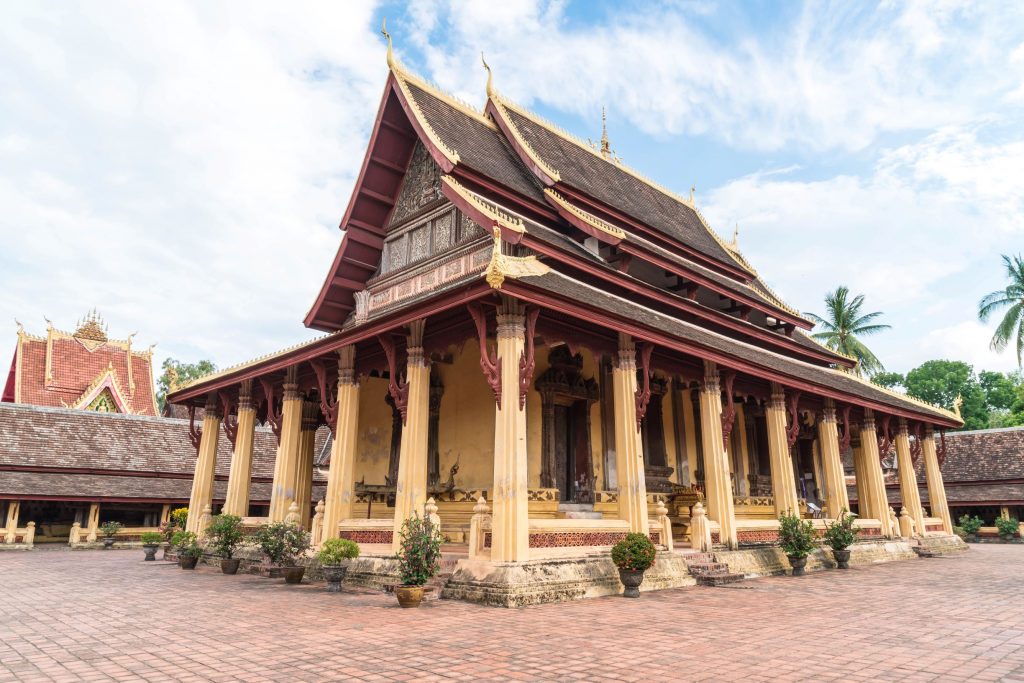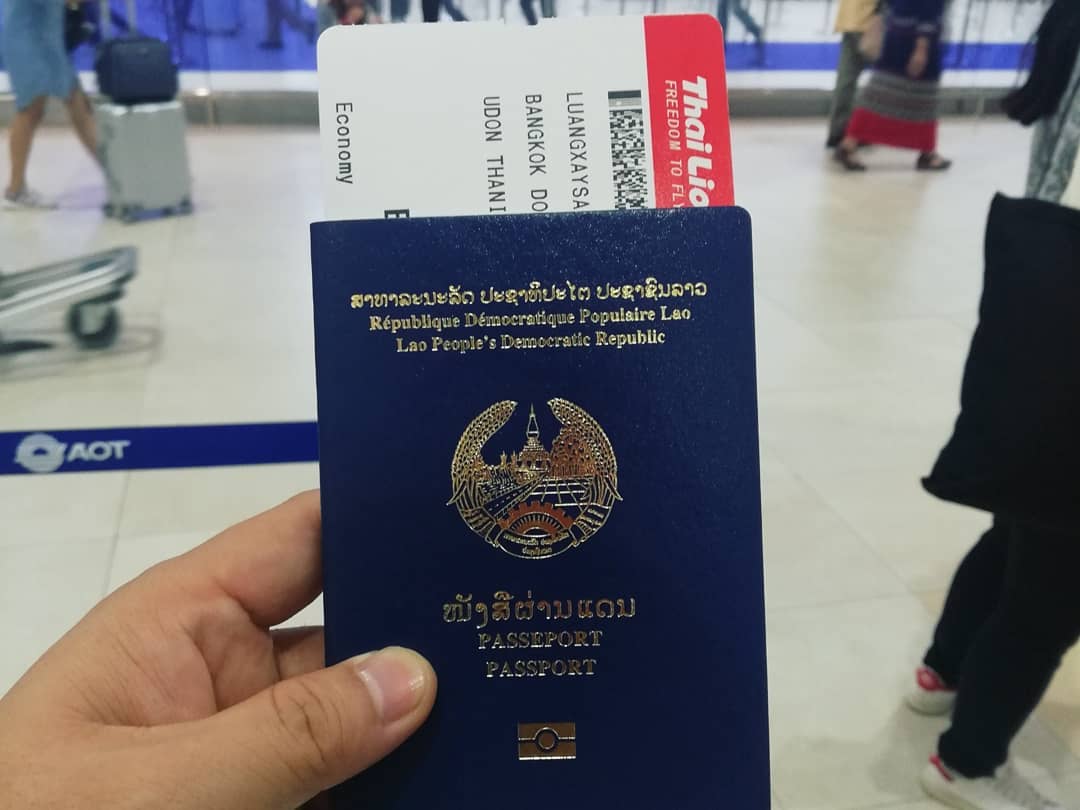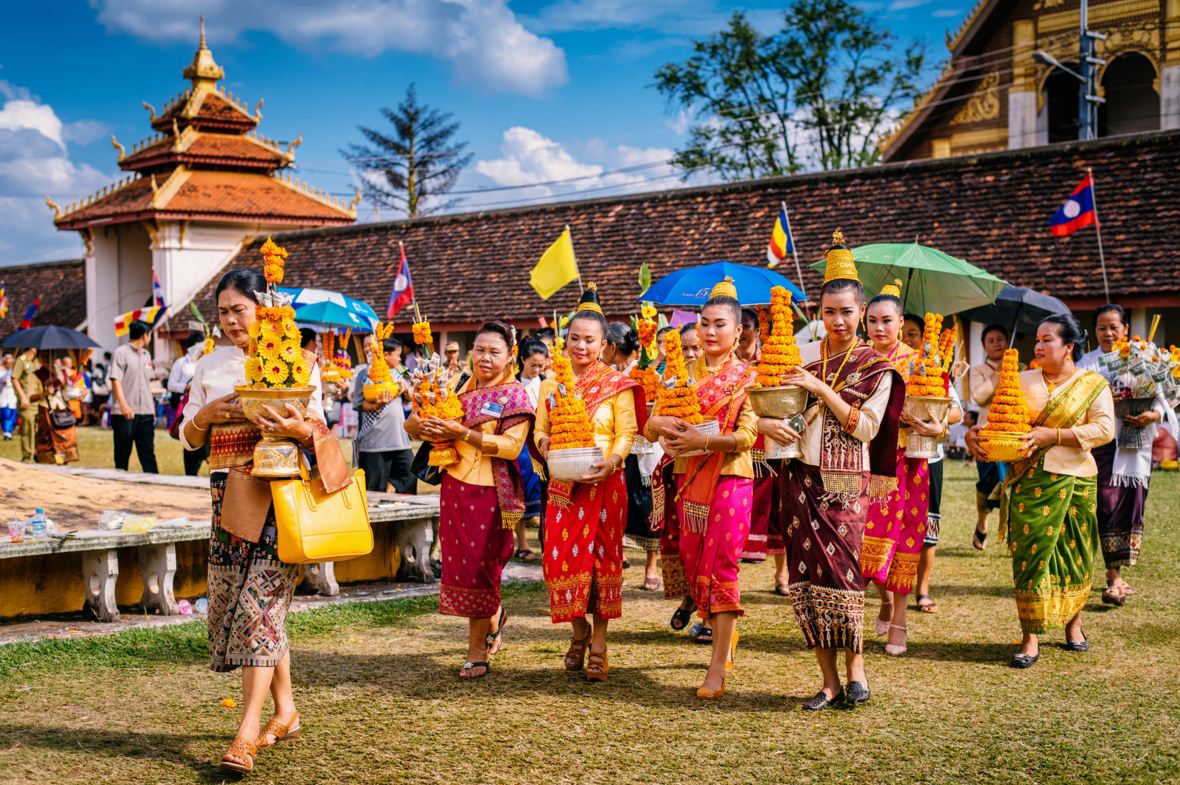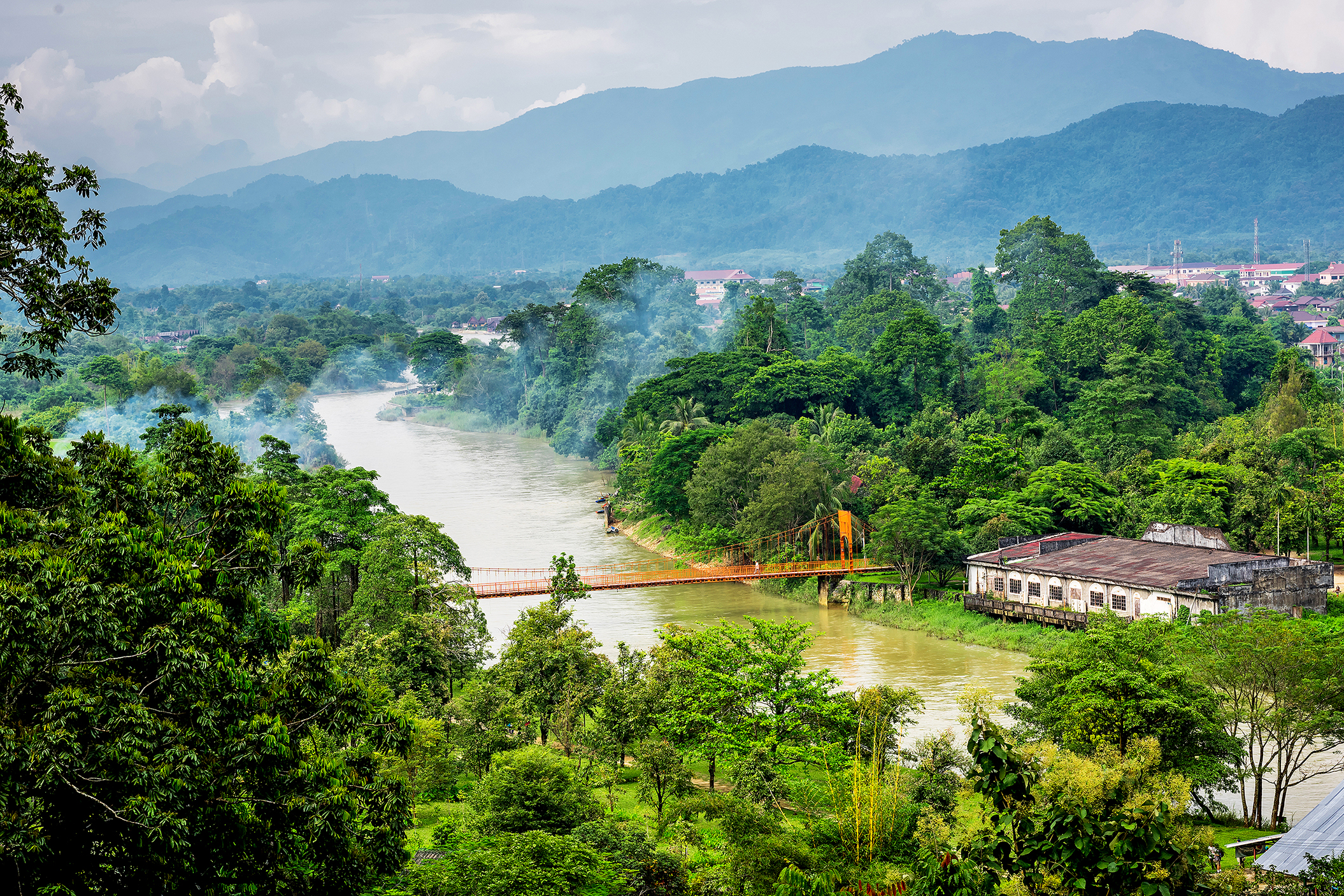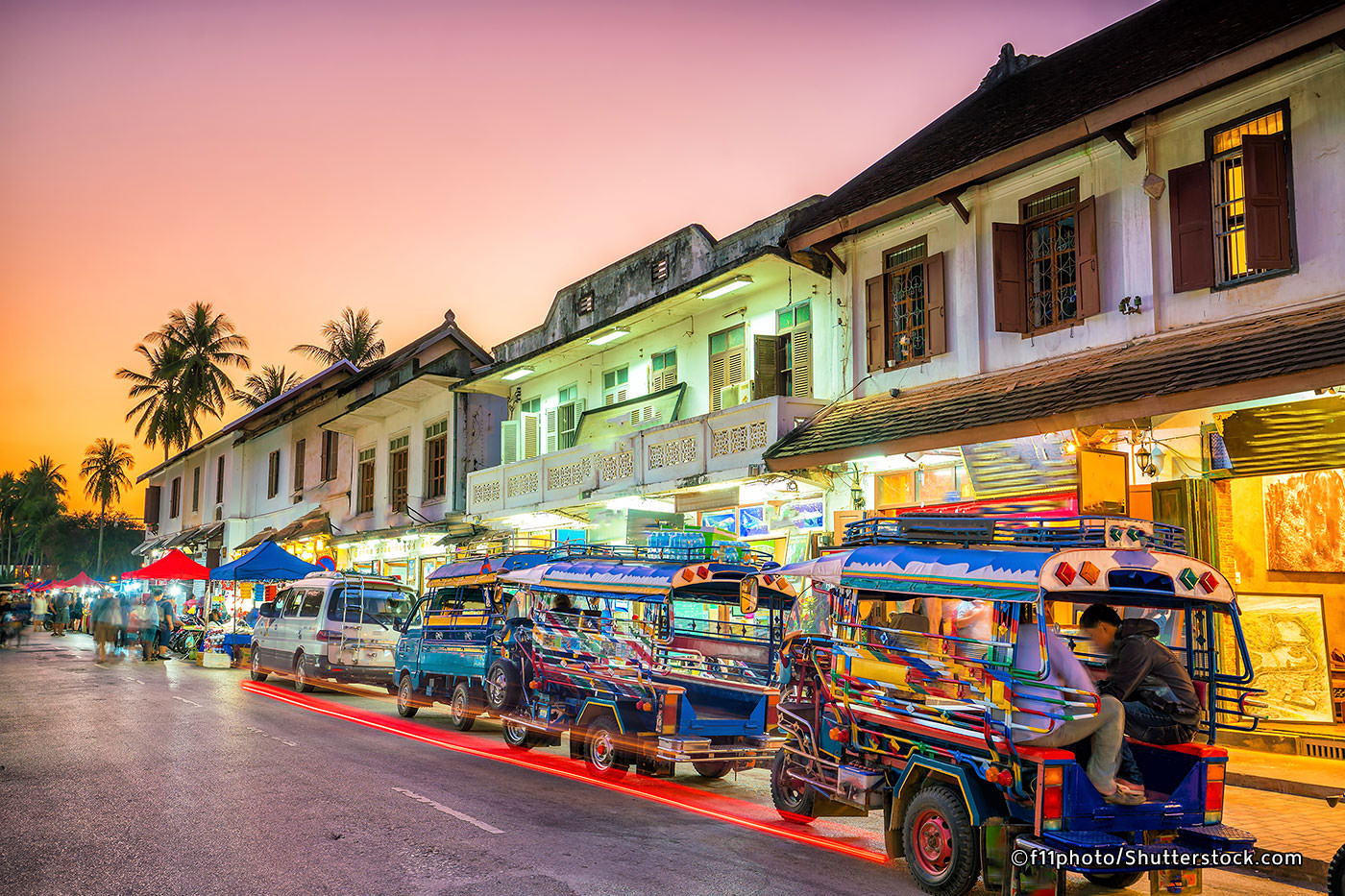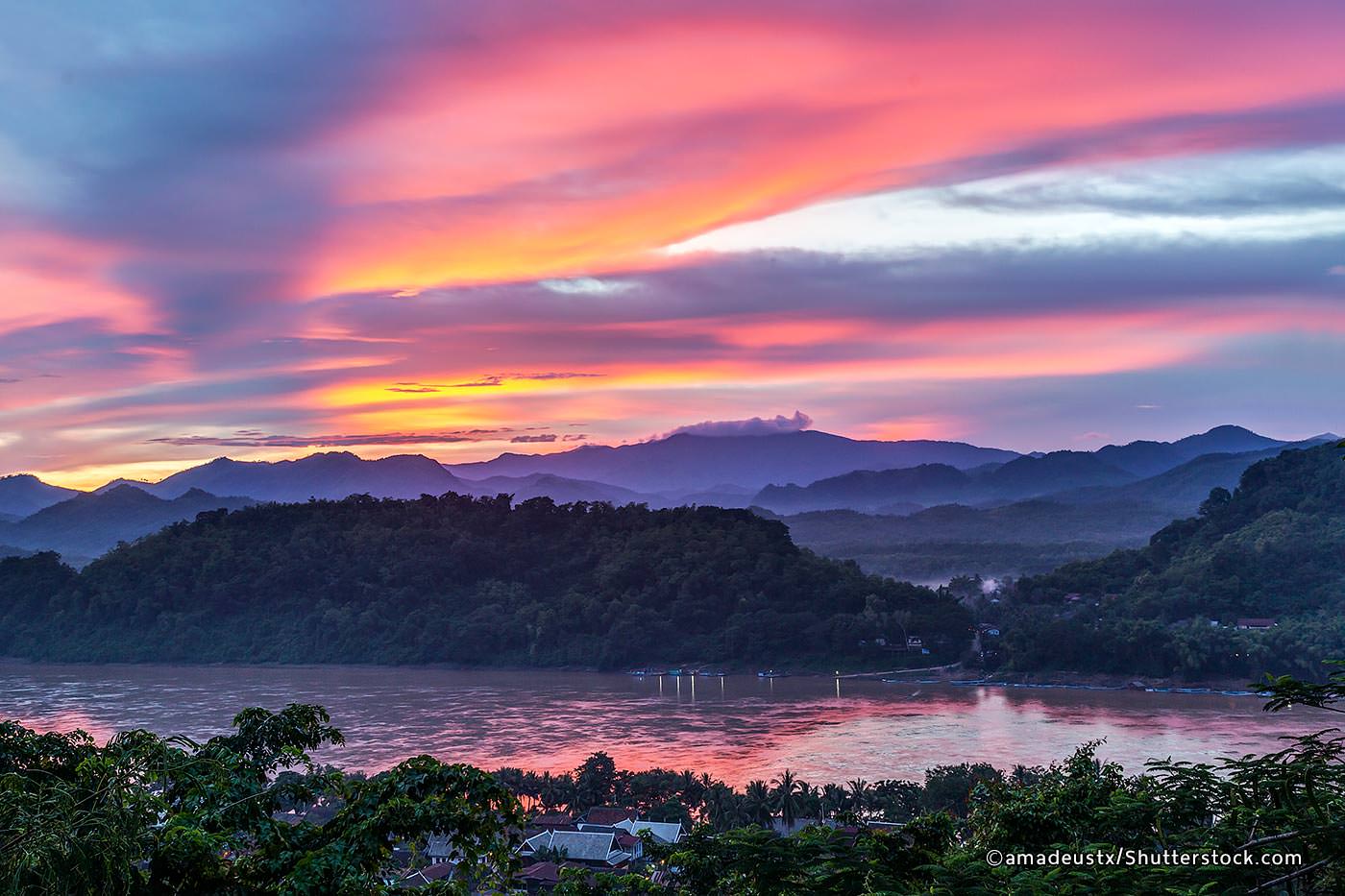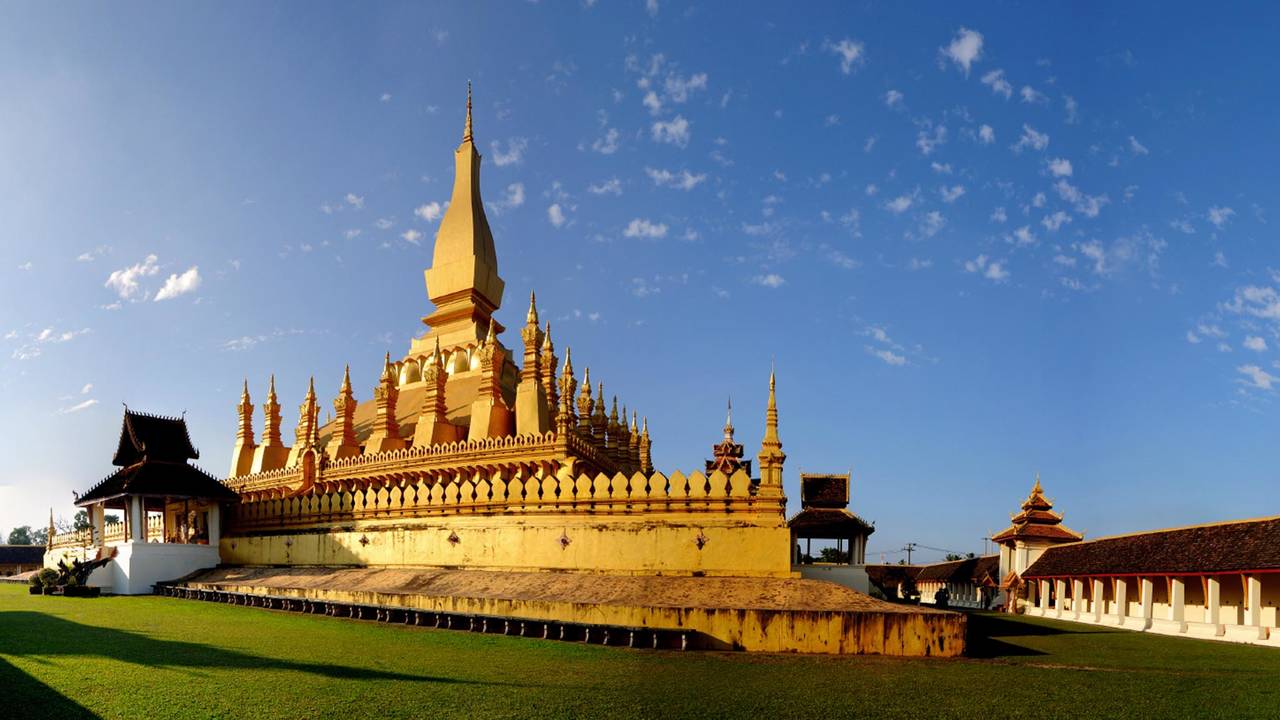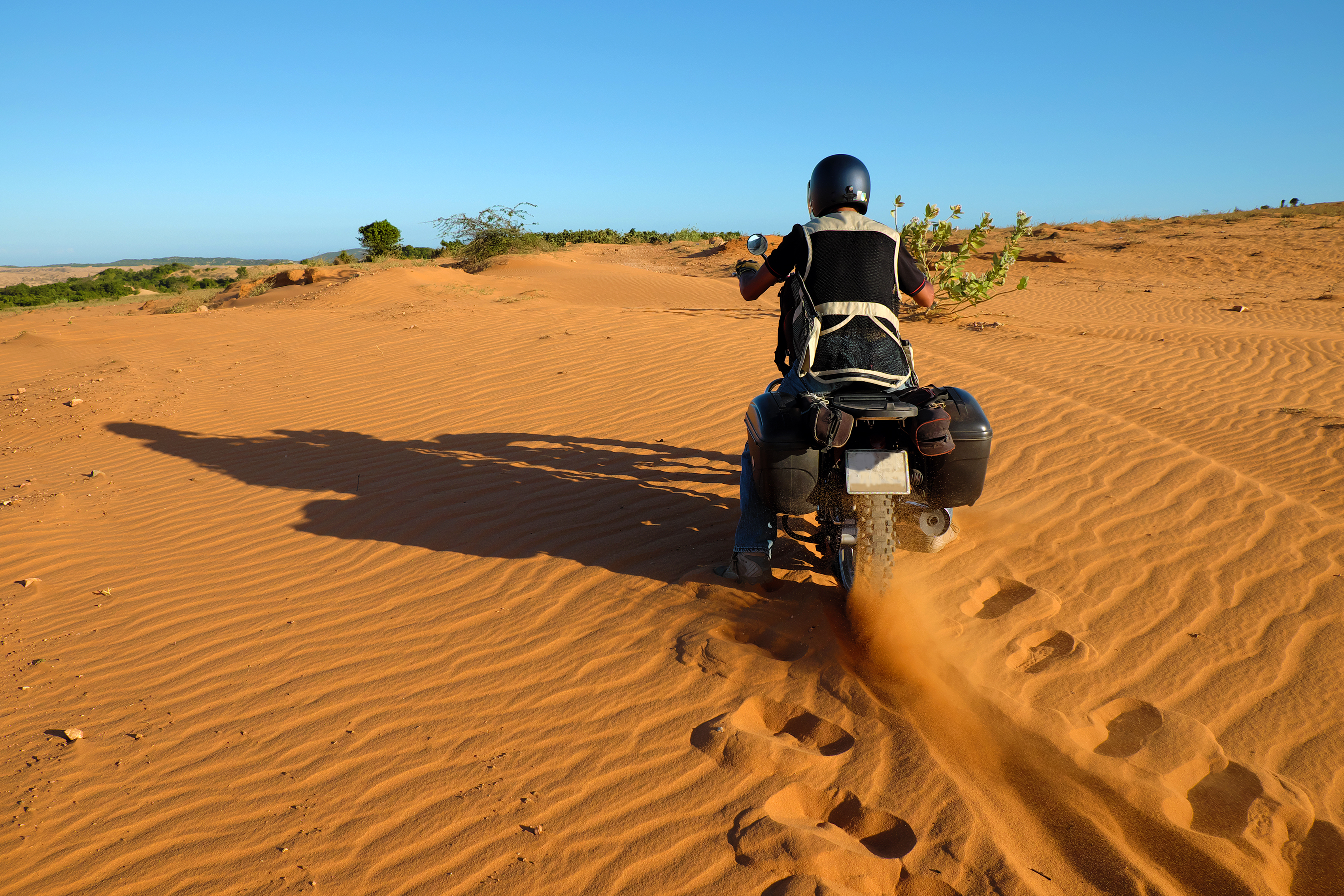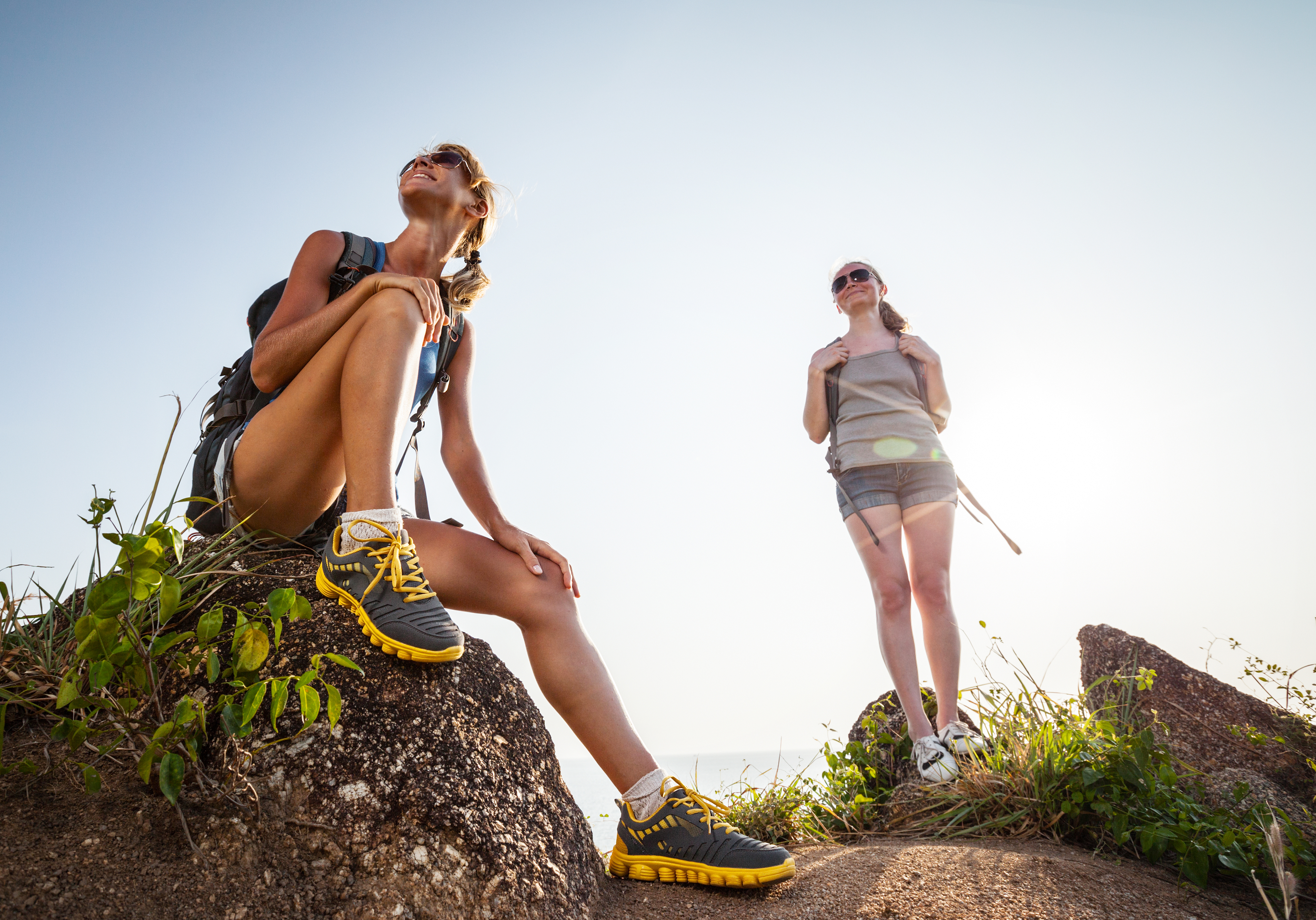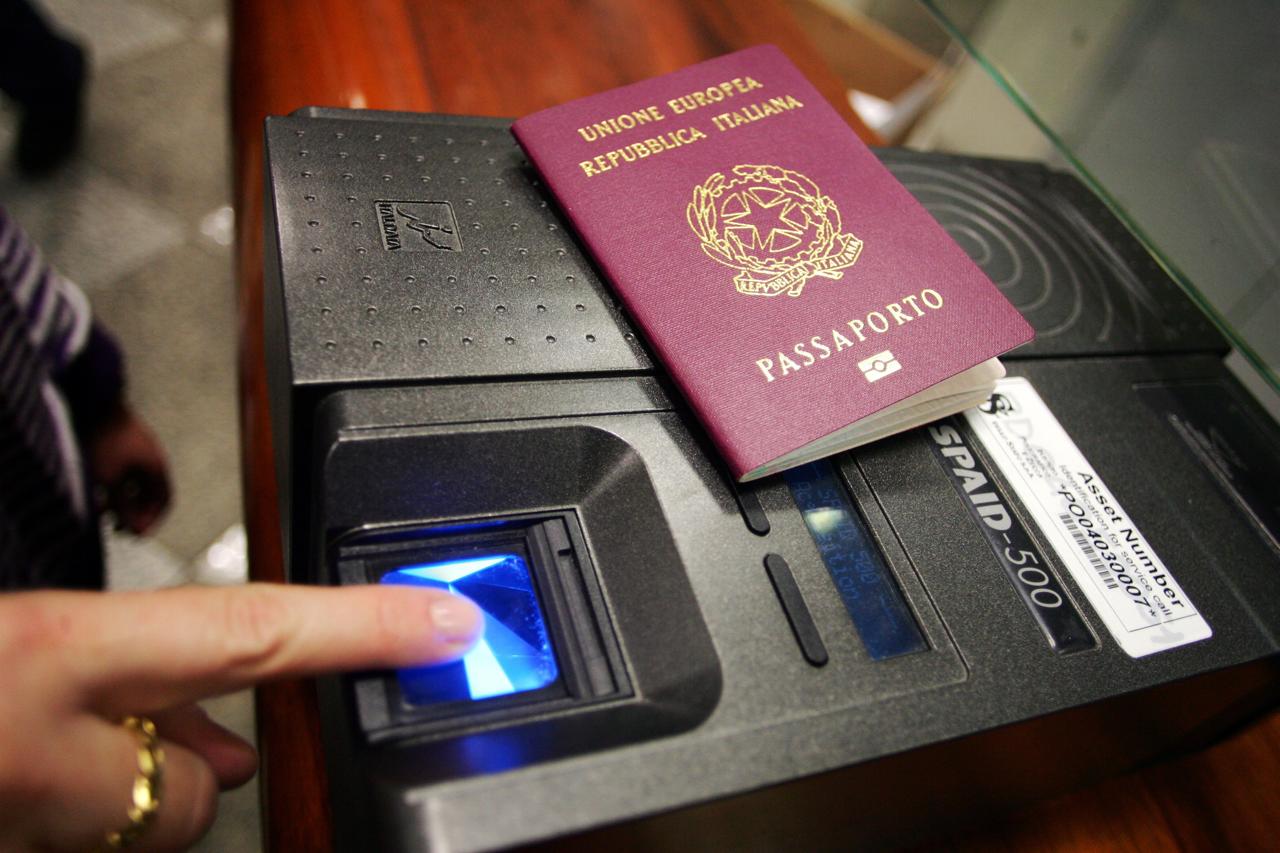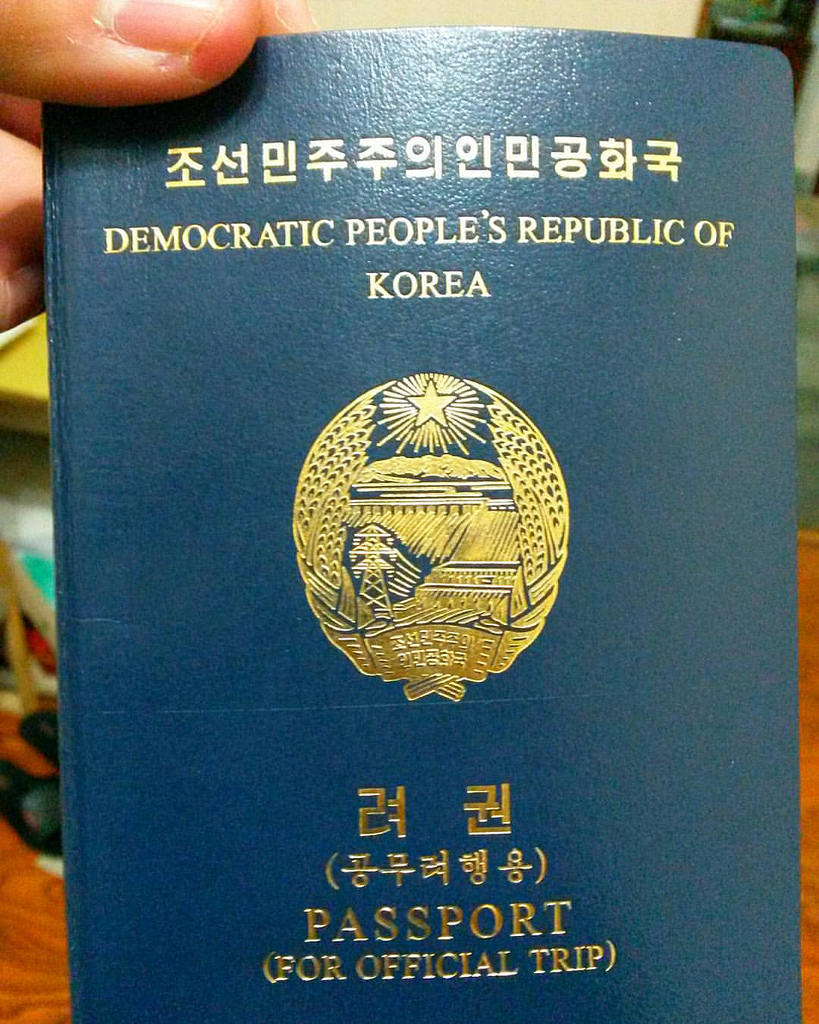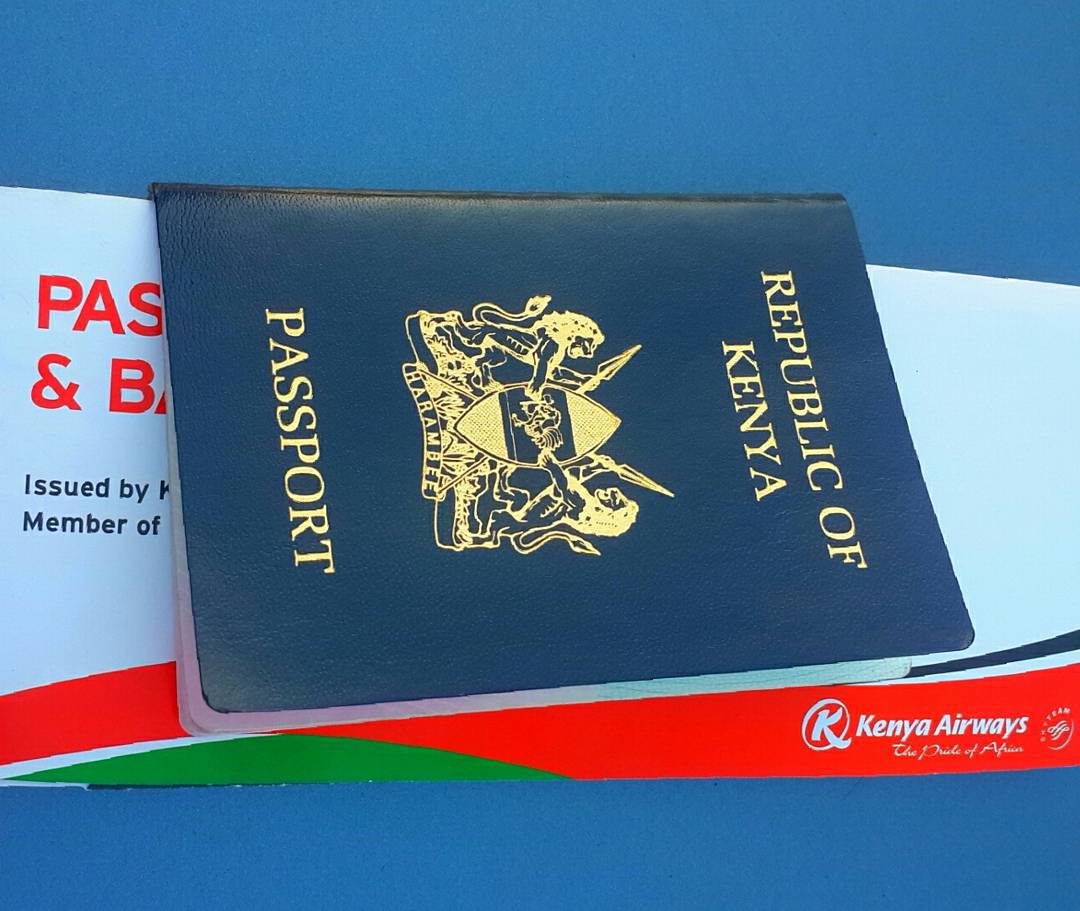One of the nice things about Vientiane, the capital of Laos, is that there are really not many must-see, must-do attractions beckoning it’s visitors. It takes the pressure off and your free to just relax and move at your own pace. My wife and I felt this way the afternoon we rolled into town arriving from our stay at the luxury Nam Ngum Resort and Casino.
Unlike most Asian capitals Vientiane is a quiet and modest town in both size and demeanor. It is the least “Southeast Asian like” city of all the Southeast Asian capitals. Located on the eastern bank of The Mekong River across from it’s neighbor Thailand. Here you’ll find a treasure trove of French bakeries and restaurants as well as wine cellars, busy night markets and Buddhists stupas. This is exactly why we liked our visit to Vientiane —no pressure. This was the perfect place to wander around, taking our time and moving when and where we liked.
We decided to stay at a small centrally located boutique hotel near the city center which we had found listed on Airbnb, named “No Name Hotel”. It was reasonably cozy and comfortable and reasonably priced at $30. The owner, Mr. Lai, was very helpful and answered all our questions regarding the city and where we should go.
We arose early the next morning in order to watch the monks parade for Alms, similar to the Alms ceremony we had attended in Luang Prabang. We then walked a short way over to the local street market and had a delicious Laotian breakfast at a street side restaurant.
The Patuxai Gate
The Patuxai Gate is the most famous landmark in Vientiane. Similar to the Arc de Triumph, on the Champs Elysee, in Paris, France. It is an striking structure straddling the central lane of Xian Avenue, a major traffic artery in Vientiane. The 160 steps, in the humid heat, to the top was a sweat producing hike but with a rewarding view of the Presidential Palace at one end and the Pha That Luang temple located at the street’s other end.
Built between 1957 and 1968 this victory arch is dedicated to the Laotian’s who died fighting for France during World War Two and those who also died in the Laotian War of Independence fought against the French.
Buddha Park (Xieng Khuan)
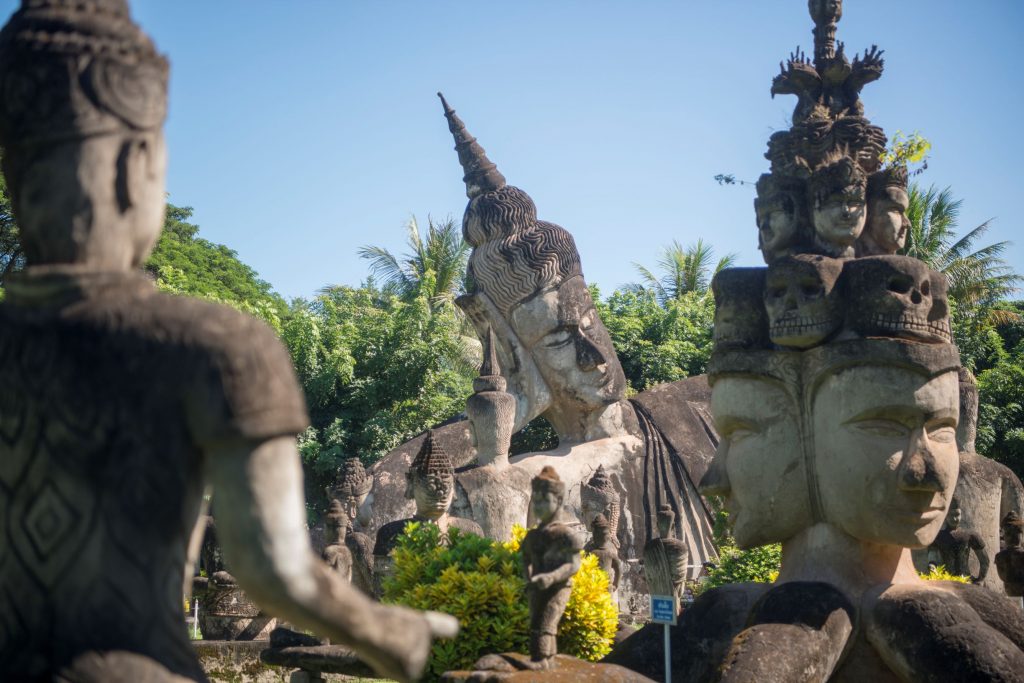
Twenty Five kms outside of town is found the Buddha Park. A strange and wonderful collection of mostly large sculptures influenced by both the Buddhist and the Hindu religions. Luang Pu Sulilat was the Buddhist monk who was responsible for the creation of the park in 1958. He dreamed of uniting the two faiths as shown by the mythological melting pot he created. It is a famous sculpture park of world wide renown exhibiting more than 200 religious sculptures including a huge 40 meter reclining Buddha. The gallery includes Indura, the King of the Hindu Gods riding a three headed elephant and a four armed diety sitting on a horse. The sculptures are popular not only because of their size but also because of the ornate detail used and the interesting motif.
We really enjoyed our visit to the park and after about 2 ½ hours of walking around we had a late lunch at the café located in the back of the park next to the Mekong River.
Pha That Luang Temple
Pha That Luang Temple, or the Great Stupra, is considered to be a national monument, the most sacred symbol in Laos. Pha That Luang is an impressive and beautiful structure that resembles a golden fortresses from the outside. The top is covered in gold leaf and stands 148 feet high.
The current structure was first built in 1566 by King Setthathivat. After being seriously damaged by the Chinese and then the Siamese invaders in the 18th and 19th centuries it was finally restored by the French around 1900 and finally once more in 1930.
Every November a Boun That Luang Festival is held over three days and three nights in Vientiane. The annual festival attracts followers and tourists from all over Laos and Southeast Asia and is considered to be the most important of all Buddhist celebrations in Laos.
Wat Si Saket
Wat Si Saket is one of the most popular wats in Vientiane and is famous for its “cloister wall” featuring thousands of tiny Buddha images and rows and rows with hundreds of seated Buddhas. These images and statues date from the 16th through 19th centuries and are found in all sizes, made from wood, bronze and stone. There are a total of of over 6800 Buddhas in this amazing collection.
Wat Si Saket is not only renown for the cloistered interior walls but also for the beautiful architecture and it’s layout dating back to 1818. The building features beautiful surrounding verandas, an ornate five tiered roof, a drum tower and the flowered ceiling of the orientation hall.
Located opposite the Presidential Palace, the temple was built by King Chao Anuvong the last king of the Siamese-Lao War of 1828 and is considered by historians to be the oldest Buddhist monastery in Laos.
It was now after 5pm by the time we had finished touring this impressive Wat so we headed back to No Name to get cleaned up for dinner.
